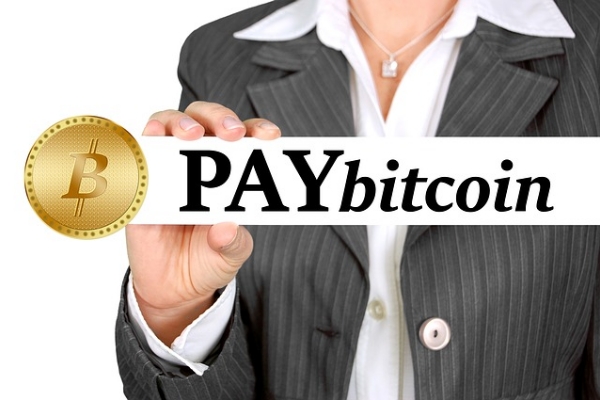Exploring Technology’s Cutting Edge: Can Blockchain Work for You?

Blockchain Basics
What is blockchain? As with all complex technology, it’s difficult to give a quick, simple answer. Further complicating the linguistic distillation of the concept is the fact that this is a truly international technology that has been developed, altered, and defined by different people across the globe. Plus, translating complicated computing concepts into plain English can be quite difficult. Chances are that if you’ve heard of blockchain before and tried to read about it, you’ve walked away somewhat confused. Essentially, a blockchain is a database that’s used to create and store a series of chronological records relating to a specific item or event. The blockchain is often mentioned in the same breath as Bitcoin because it’s the technology used to track Bitcoin digital currency as it is spent, sold, or traded.
The name “blockchain” is descriptive. These databases are a series of digital “blocks,” each of which is distinguished from the blocks ahead and behind in the chain through the use of timestamps. One great thing about this structure is that it’s nearly infinitely scalable, making it suitable for a variety of complex tasks. This recordkeeping system is also designed to be extremely secure and resistant to tampering, making it a top choice for a variety of different situations in which anonymity, protection, and integrity are at a premium.
Part of what makes blockchains so secure is that they can be decentralized, meaning they aren’t linked to a central authority or manager that’s responsible for overseeing the security of each record. This means that cybersecurity attacks in which millions of users’ data becomes compromised are highly unlikely with a blockchain. It also means that if one node in the network of databases stops operating, the entire system can continue operating. Blockchain applications that use this decentralized approach are known as decentralized applications or DApps.
Diving Deeper
Blockchain technology can trace its origins to the early ‘90s when developers worked on creating discrete records of cryptographically secured information they referred to as blocks. The goal was to create distinct data structures that could be kept private and secure through the use of encryption. The concept really took off when the digital currency Bitcoin was first under development. The anonymous cryptocurrency designer known as Satoshi Nakamoto needed a way of creating timestamped records to show the details of financial transactions. Thus, encrypted blocks were linked into a chain, and blockchain was born. Of course, this simple overview doesn’t even begin to scratch the surface of what blockchain technology is, how it works, and what it can do.
It can be helpful to compare and contrast blockchain with other digital technologies in order to understand its potential. One common analogy comes from journalist Sally Davies, whose comparison between blockchain/Bitcoin and the internet/email is frequently cited by those attempting to give a basic, beginner-friendly overview of the blockchain. Essentially, blockchain is to Bitcoin what the internet is to email. That is, just as the Internet can be used for much more than email, the blockchain technology that supports Bitcoin transactions has many potential applications beyond mere cryptocurrency exchanges. Limiting our Internet use to email only would be a mistaken waste of technological potential and, so the analogy goes, it would be a similar mistake to limit our use of blockchain technology to cryptocurrency transactions alone. Bitcoin is just one blockchain technology application out of potentially thousands.
In the context of this analogy, though, it’s important to note that there are some essential differences between blockchain and the Internet. One major difference is that the Internet is a communications network, while a blockchain is a database of information. On a very high level, the two technologies function in a theoretically similar way, but blockchain isn’t a replacement for the Internet as we know it. In fact, blockchain is more of a function of the Internet, like email, than a standalone communications network. At this point, you’ll need an Internet connection of some sort to access a blockchain.
Think of it this way: There’s only one “big I” Internet that the average person use, but there are multiple different blockchains. You can create intranets and extranets, but when you’re talking about “the internet,” you’re talking about the network that uses TCP/IP protocol that you can access with a connection through an Internet service provider (ISP) like Comcast, Charter, or CenturyLink. You can also have “a blockchain,” referring to any distributed database of a specific type, but when you’re talking about “the blockchain,” you’re talking about a specific company or application’s database. Blockchain technology in its current form is strongly tied to Bitcoin, but it’s not the only blockchain that exists.
The Ledger: Blockchain’s Public Face
So, as an encrypted, decentralized, tamper-resistant database, blockchain is a completely opaque, shadowy world, right? Well, not exactly. Privacy and data security are top priorities, but there’s a degree of transparency involved in the standard blockchain. Bitcoin is actually a great example of this; you can see when Bitcoin transactions happen in the blockchain wallet. You just can’t see specific information about who was involved with a transaction.
Tech experts often describe blockchain technology as a “decentralized ledger,” with “ledger” being the operative word in this situation. A ledger is a record, and that’s exactly what a blockchain is. Data integrity is central to the blockchain concept. Each of the blocks in a blockchain serves as a record for an event and to go back and alter those events is next to impossible. If you want to go back and alter part of an agreement, for example, you’d need to add a new record stating that the change was made rather than going into the original record of the agreement and changing the terms. These features make trustworthiness an element of operation in blockchain technology, which is a somewhat unusual feature for this kind of tech tool.
The idea that there’s a degree of integrity, trustworthiness and public transparency associated with the blockchain concept may come as a surprise to some. If you don’t know a lot about Bitcoin, you may be wary of the association of a technology with currency that was hyped as a way for criminals to get paid online. This isn’t a fair characterization. In short, blockchain and cryptocurrency are not the sole provenances of criminals.
Though it can’t be denied that the anonymous, decentralized nature of blockchain technology makes it alluring to black market types, Bitcoin trading, much of which is carried out with blockchain wallets, is becoming a legitimate financial market of sorts. As of this writing, Bitcoin price is has skyrocketed, indicating the minting of some major financial players. Plus, the public ledger doesn’t lie. As mentioned earlier, it’s difficult—if not impossible—to alter the record of a blockchain. The participants in the transaction may remain anonymous, but the transaction itself typically is not.
All of this points to some highly disruptive potential for blockchain technology in the financial sector. It’s important to remember that blockchain is not proprietary to Bitcoin and that means there are lots of other ways to use this technology for financial transactions. At this point, blockchain is still a relatively inside-baseball topic in tech, but you can count on that changing in the coming years. Blockchain may even represent the future of banking. Blockchain wallets are streamlined and secure in a way most modern banks are not, which could be broadly appealing to consumers if they’re introduced to the technology in the right way. Also of potential appeal to consumers is the fact that participants in a blockchain transaction have equal status with respect to information access. This would put the customer on the same informational footing as a financier when monetary transfers are being made.
Other Uses for Blockchain Technology
Transactional financial applications aren’t the only way blockchain is set to shake up the way we do business and access personal information. The blockchain wallet is certainly useful, but that’s just the tip of the iceberg. There are already some interesting applications for blockchain being put in practice right now. One blockchain-based Bitcoin alternative is the cryptocurrency competitor Ethereum, which took the technology a step further by allowing computer programming code to run from its databases. As a distributed public network, Ethereum is becoming a playground of sorts for developers who want to build DApps of all sorts, not just those relating to cryptocurrency. This is a highly promising development that shows how powerful a blockchain can be.
One highly vulnerable area that blockchain technology can improve is the storage and retrieval of medical records. As our personal health histories are digitized, many people simply take for granted that their doctors’ offices are doing the right thing and protecting personal healthcare information in a reliably secure manner. Unfortunately, though, this is often not the case. Hospitals are major targets for cybercriminals looking to perform massive medical identity theft hacks, and the implications of these attacks are frightening. Medical identity theft exposes its victims not only to the stress, hassle, and financial ruin of traditional identity theft but also to potential criminal charges. If the person who steals your medical identity uses it to try to scam dangerous prescriptions from doctors and breaks laws relating to insurance fraud using your name, you could be in serious trouble. All of the blockchain’s powerful encryption, privacy, and decentralization abilities can revolutionize the way we think about protecting, sharing, and housing records of our healthcare.
In essence, anything that involves recordkeeping can make use of blockchain technology. As consumers become more concerned with what’s in the products they use, companies committed to transparency can easily use blockchain to automate supply chain transparency and make each step in the manufacturing process available to their consumers. Blockchain may even have a role to play in the future of elections, providing the right balance between privacy, integrity, and transparency.
Smart Contracts and Modern Labor
One last example of blockchain’s potential to disrupt all aspects of our lives: Smart contracts. A smart contract is essentially a computerized agreement between two parties that makes the execution of that agreement dependent on specific conditions. For example, if a small business owner hires a graphic designer to create a logo for a rebranding effort that business owner and the designer could enter into a smart contract stipulating that $250 will be paid out upon the successful completion of the job. The business owner puts $250 into a blockchain wallet, which is then held by the blockchain application until the designer submits the logo and asks for funds to be released, which the business owner will do after agreeing that the job has been completed in a satisfactory manner. It’s quick, easy, secure, and possible without a middleman.
Business leaders in all fields should be particularly interested in the opportunities presented by smart contracts, a blockchain application that automates and digitizes contractual agreements for the sale or exchange of goods and services. One major reason is that smart contracts can easily cut out middlemen in the gig economy. Companies like Uber, Airbnb, Ebay, and even the Amazon seller marketplace may find that their contractors and merchants are fleeing in order to use peer-to-peer blockchain networks to conduct business directly with their own customers. Why pay a user fee when you can do business directly with a service provider?
Clearly, blockchain is a force to be reckoned with and it’s going to have a growing influence in all areas of business in the years to come. Stay on the lookout for news about blockchain, and as you make hiring decisions in tech positions, be mindful that those who are in the know about blockchain are likely to deliver value in the future.
- About the Author
- Latest Posts
Claudia is a senior content writer with an insatiable wanderlust and a passion for exploring the world of business. Armed with a pen and a laptop, she roams the globe, capturing the essence of diverse cultures while delving into a myriad of business-related subjects.








